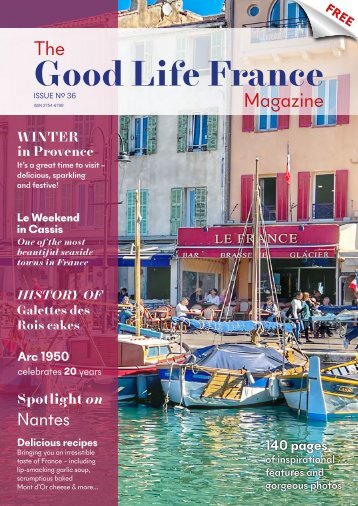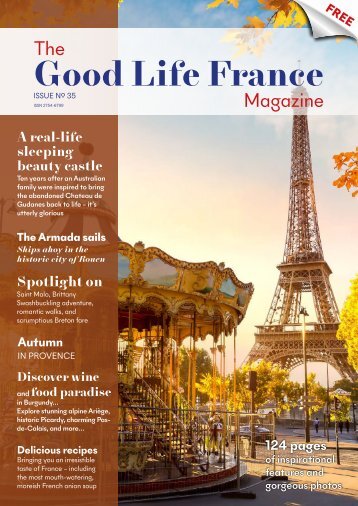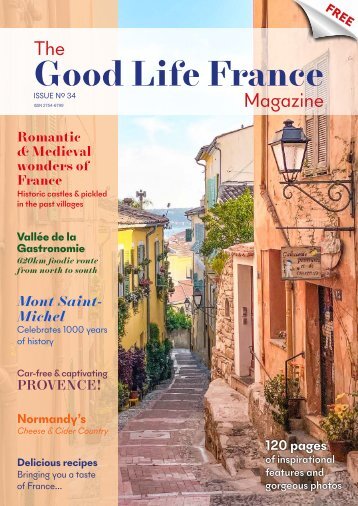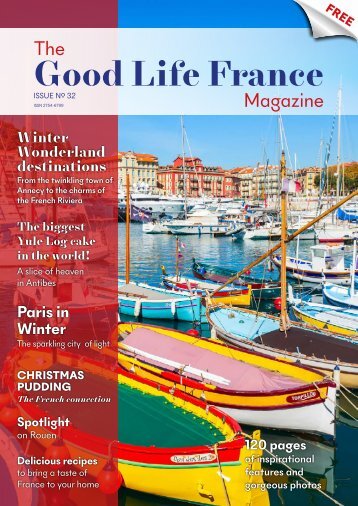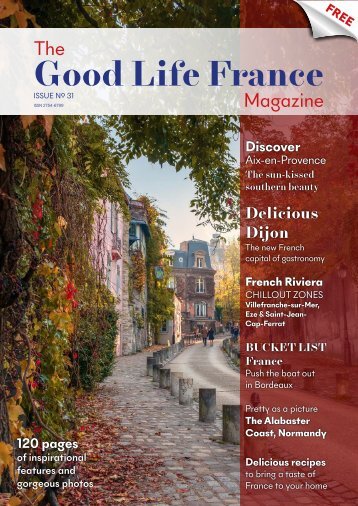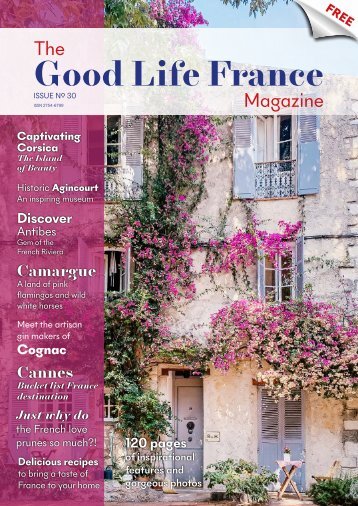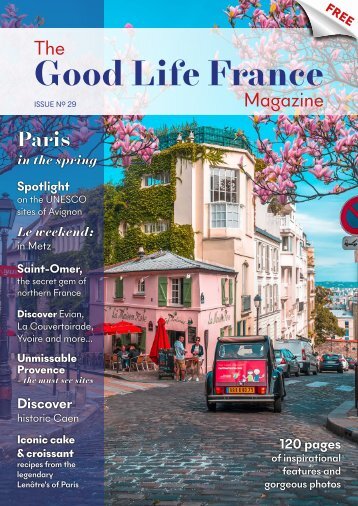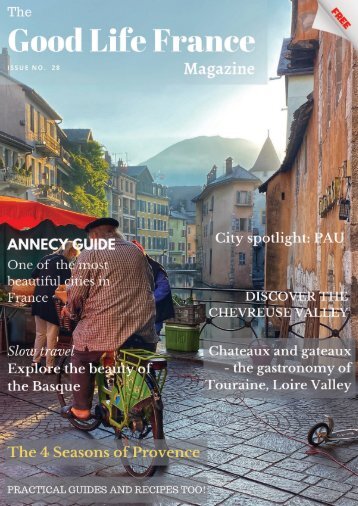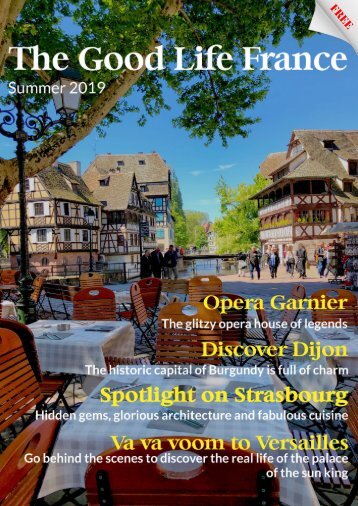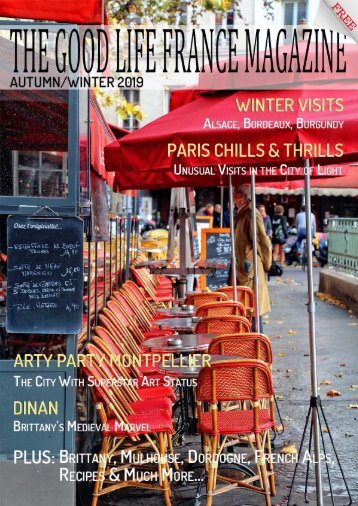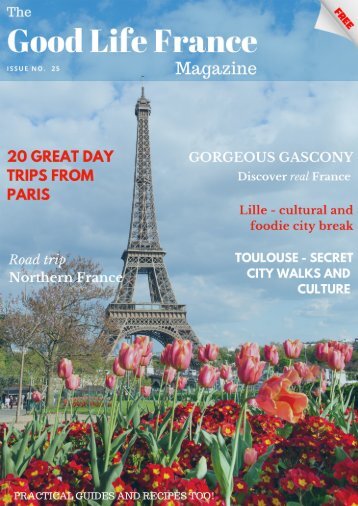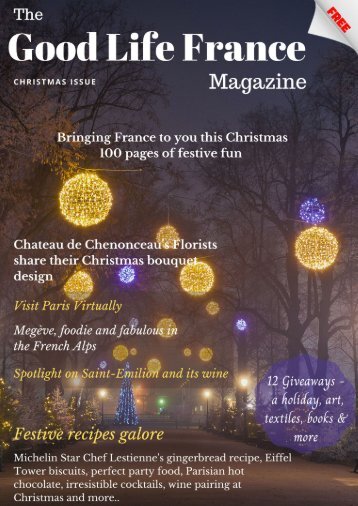
The Good Life France Magazine
The Good Life France Magazine brings you the best of France - inspirational and exclusive features, fabulous photos, mouth-watering recipes, tips, guides, ideas and much more...
Published by the award winning team at The Good Life France
Christmas special Issue 27
Photo: Credit Le Procope
Photo: Credit Le Procope Paris The royal penchant for coffee Coffee was first introduced to Paris in 1669 by Suleyman Aga, the ambassador to the court of King Louis XIV of France. Aga was sent by Mohammed IV with sacks of coffee. He described it as a magical beverage when mixed with a small quantity of cloves, cardamom seeds and sugar, which in those day was bought by the ounce at the apothecary’s shop. He also brought the apparatus used for the preparation of the Turkish style coffee drink. It included china dishes, and small pieces of muslin embroidered with gold, silver, and silk, used as napkins. He became the darling of Parisian society, remaining in the city long enough firmly to establish the custom he had introduced. Two years later, in 1671, an Armenian whom everyone called Pascal, opened a coffee-drinking booth at the fair of St. Germain. He offered the beverage for sale from a tent, supplemented by the service of Turkish waiter boys, who peddled it among the crowds from small cups on trays. The fair was held during the first two months of spring, in a large open plot just inside the walls of Paris and near the Latin Quarter. As Pascal’s waiter boys circulated through the crowds on those chilly days the fragrant odor of freshly made coffee encouraged many sales of the steaming beverage. Soon visitors to the fair learned to look for the “little black” cupful of cheer, or petit noir, a name that still endures. This marked the beginning of Parisian coffee houses. In 1686, the Café de Procope was opened by Sicilian chef Francesco Procopio dei Coltelli. He had come to Paris from Italy acquiring a royal license to sell spices, ices, barley water and lemonade. As a keen business man he added coffee to the list and soon attracted a large and rather distinguished clientele: noted French actors, authors, dramatists and musicians. With the opening of the Café de Procope, coffee became firmly established in Paris.
Louis XIV (1638-1715) grew his own coffee beans in greenhouses on the Versailles Palace grounds. He handpicked the beans, roasted them, and ground them himself. He loved to serve his own coffee to guests of the Palace Read more about the Kings potager (vegetable gardens) at Versailles . Voltaire (1694-1778), a French writer and public activist, allegedly drank between 40 and 50 cups a day which he mixed with chocolate. He credited coffee for the inspiration and stimulation behind the development of his philosophies. He paid hefty bonuses to his servants who could find his favourite coffee beans. The first merchant licensed to sell coffee in Paris was François Damame, who secured the privilege through an edict of 1692. He was given the sole right for 10 years to sell coffee in all the provinces and towns of the kingdom, and in all territories under the sovereignty of the king. Every city in France soon had its coffee houses. In 1714, Louis XIV received a present from the Dutch, a coffee tree for Paris’s Royal Botanical Garden, the Jardin des Plantes. The Dutch had successfully grown the coffee tree on the island of Java. This inspired Louis XIV to consider Martinique for growing coffee. He gave a clipping to a young naval officer, Gabriel Mathieu de Clieu who sailed for Martinique. Pirates nearly captured the ship and a storm nearly sank it. Drought followed, water grew scarce and was rationed, but de Clieu gave half of his allotment of drinking water to his stricken cutting. Under armed guard, the cutting was planted and grew strong. In the next 50 years it yielded a whopping 18 million trees. Coffee become the king of drinks in Paris...
- Page 3: Merry Christmas What a year it's be
- Page 6 and 7: 44 30 60 46 Contents Festive food f
- Page 9 and 10: How to make a bouquet fit for a cas
- Page 11 and 12: Above: Jean-Francois and Aurelie, t
- Page 13 and 14: Madame Bernadette's trio of party c
- Page 15 and 16: Ingredients for 10 pieces: 10 thin
- Page 17 and 18: 70 g of softened butter 100 g of Ro
- Page 19: Guaranteed to blow your socks off!
- Page 23: Stained glass Eiffel Tower Biscuits
- Page 26 and 27: Boulogne-sur-Mer, northern France Y
- Page 29 and 30: More than 100 years later, her grea
- Page 31: 180g of plain flour, sifted 180g of
- Page 34: Dates, sometime stuffed with marzip
- Page 37: How to make gummy jellies at home:
- Page 40 and 41: Wines for starters Languedoc red to
- Page 42 and 43: How to choose a French wine that su
- Page 44 and 45: The ultimate French chocolat chaud
- Page 46 and 47: The History of coffee in France Pho
- Page 50 and 51: " Napoleon Bonaparte asked for a sp
- Page 52 and 53: Win a fabulous week-long holi south
- Page 54 and 55: Win Ideal Christmas Looking for ide
- Page 56 and 57: Win Ideal Christmas More perfect Fr
- Page 58: Win Ideal Christmas Gifts for Franc
- Page 61 and 62: Chateau de Versailles View this mos
- Page 63 and 64: I didn’t think that a museum abou
- Page 65 and 66: And how are these pieces designed a
- Page 68 and 69: Toquicimes Food Festival Megève
- Page 70 and 71: It’s 10 o’clock on an October S
- Page 72: Gastronomy In spite of its celebrit
- Page 75 and 76: Of course, if you’re going to ind
- Page 77 and 78: Author Michael C Higgins, PhD explo
- Page 79 and 80: It was from the limestone quarries
- Page 81 and 82: On the northwest edge of this appel
- Page 83 and 84: Exploring wine regions - Bordeaux,
- Page 85 and 86: Marine One of my dearest memories o
- Page 87 and 88: Anne Snow and Christmas - is there
- Page 89 and 90: Rachel After the abundance of fresh
- Page 91: The French Republican Calendar Poet
- Page 94 and 95: Bedroom style French bedroom styles
- Page 96 and 97: Win a gorgeous linen tablecloth see
Inappropriate
Loading...
Mail this publication
Loading...
Embed
Loading...



